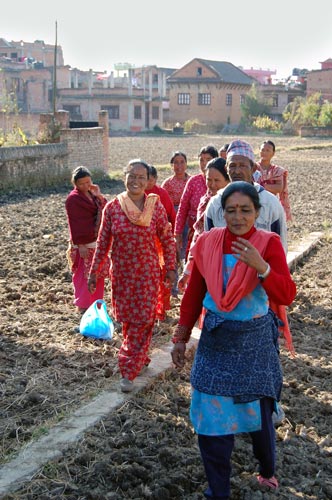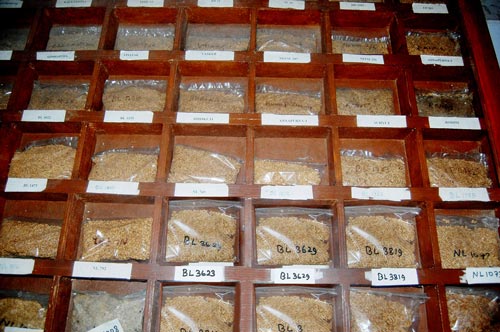By Brenna Goth/CIMMYT
A CIMMYT project in Nepal made significant progress in identifying local wheat diversity last year.

varietal selection (PVS), seed production and dissemination for the last 10 years, but is now facing problems due to urbanization. Maiya Maharjam (wearing the yellow scarf) is the leader of this cooperative and previously won the NARC award for PVS and seed distribution.
The project, “Collection, multiplication, characterization and safety duplication of wheat and barley landraces from Nepal,” led by Arun Kumar Joshi, principal scientist for the Global Wheat Program, began in January 2013 and will run until October 2015. National partners include Madan Raj Bhatta and Bal Krishna Joshi from the Nepal Agriculture Research Council, Khumaltar, Lalitpur.
Since the project began, researchers have developed guidelines “to explore, collect and characterize wheat and barley diversity,” according to the project’s 2013 Technical and Financial Progress Report. They found that traditional wheat diversity exists with opportunities for further exploration.

Researchers focused on the Baitadi, Dadeldhura and Doti districts in western Nepal, a traditional wheat region. Researchers visited Village Development Committees and farmers to collect seed and interviews. Farmers are still cultivating a variety of landraces, which feature drought tolerance and good chapatti quality. In total, 85 wheat accessions were collected and mapped along with 16 barley landraces. Employees from Nepal’s gene bank also helped with the effort.
The collections are currently under regeneration. The gene bank will send about 180 wheat and 50 barley collections to CIMMYT and the International Center for Agricultural Research in the Dry Areas (ICARDA) by June 2015 for duplication.
 Capacity development
Capacity development